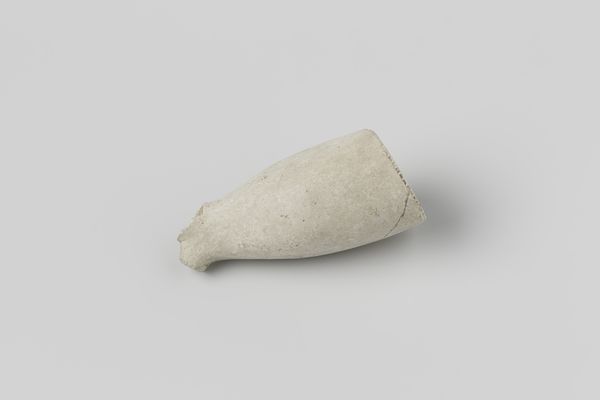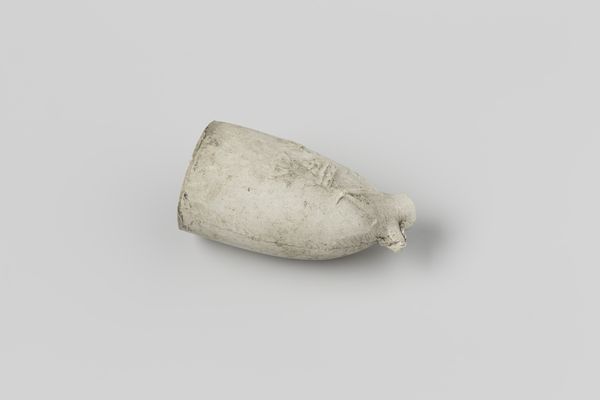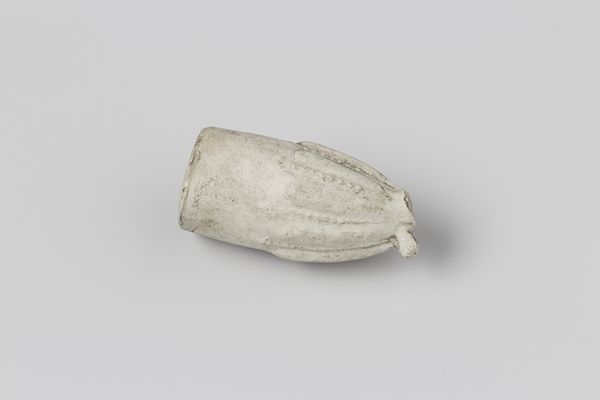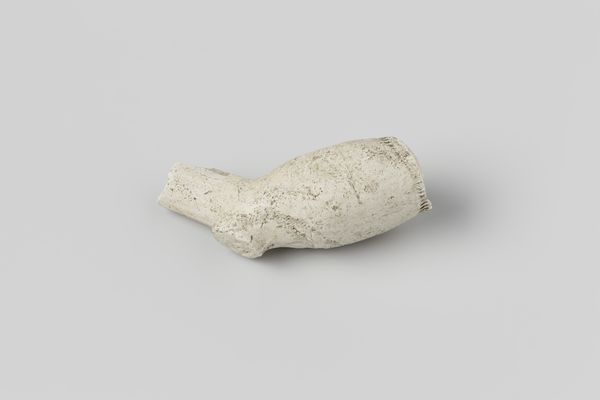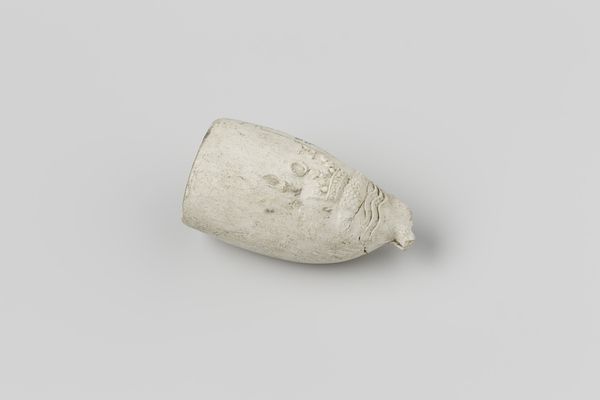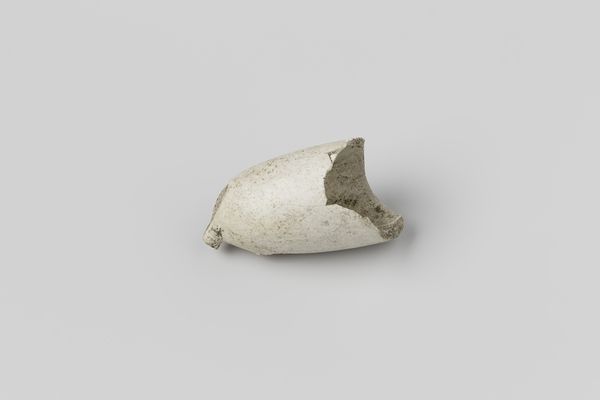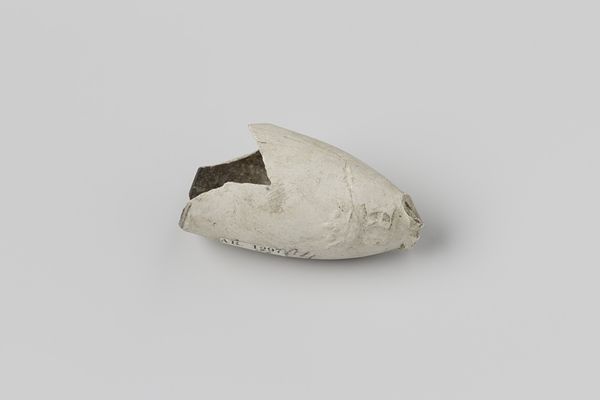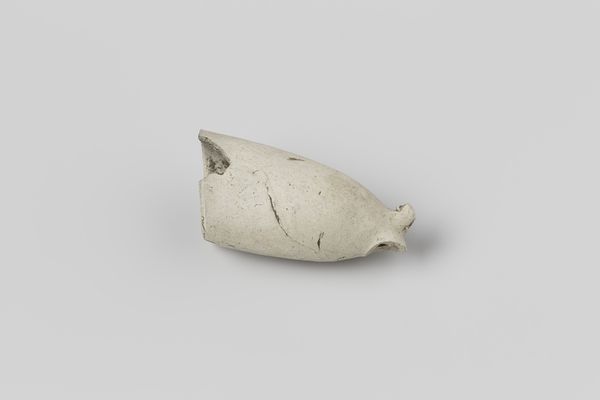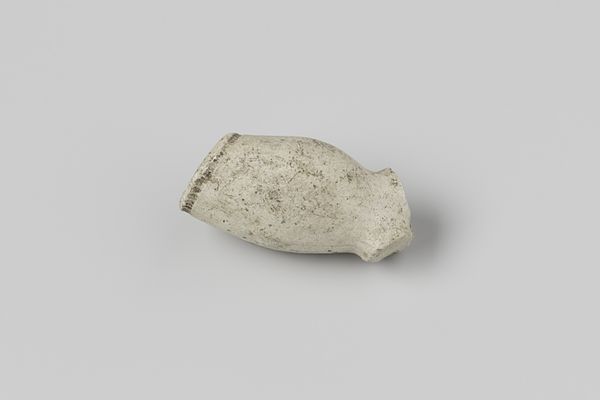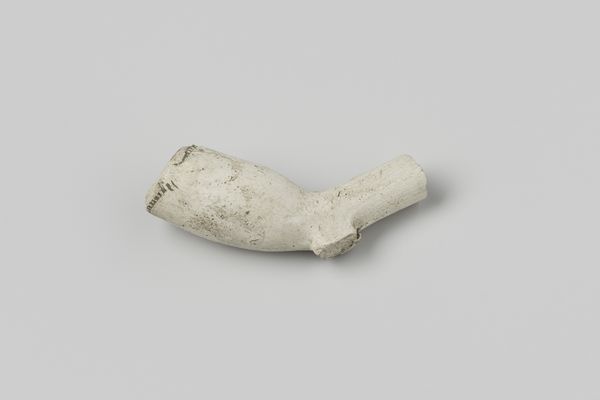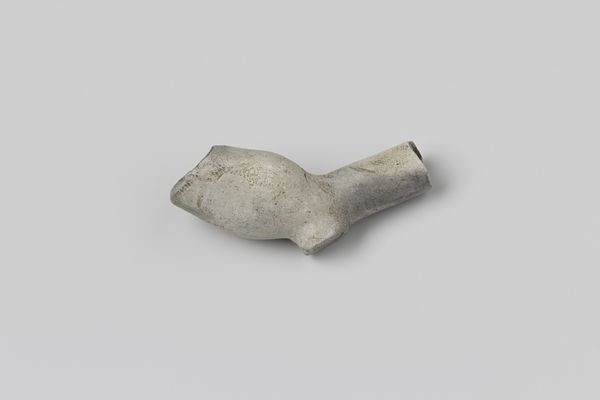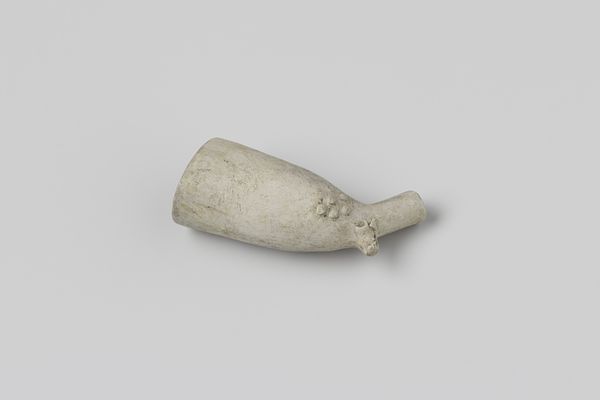
product photograph merchandise
product shot
3d printed part
virtual 3d design
curved arc
product design photgrpaphy
3d shape
metallic object render
product mock up
product photography
Dimensions: length 4.2 cm, width 2.1 cm
Copyright: Rijks Museum: Open Domain
Curator: What a fascinating object. This is a fragment of a clay pipe bowl, dating back to the period between 1750 and 1780, crafted by an anonymous artisan. Editor: There's a tactile quality evident even in this image. The fragment, though broken, hints at a simple, functional elegance. The texture, a mottled off-white, speaks to its age and use. Curator: These pipes were ubiquitous objects, central to social rituals and trade in the 18th century. Tobacco smoking had become deeply embedded in European culture, crossing class lines. The rise in popularity involved complex systems of global exchange, colonial expansion and unfortunately, enslaved labor. Editor: I see how the form follows function—the curve, the sturdy build. It is almost classical. Despite being broken, one can feel the maker's hand and envision its intended use. Notice the subtle concentric ridges along the rim – they provide a physical reminder of process, almost rhythmic. Curator: Indeed, even the materials used reflect broader economic realities. Clay, readily available, made these pipes affordable to a wide segment of the population. Analyzing the distribution of pipe fragments like this in archeological sites can tell us a great deal about trade networks and patterns of consumption within communities. Editor: I agree. What strikes me is its plainness. The absence of decoration pushes the focus onto the essence of the object—its shape, material, and the evidence of its life. The wear gives an impression of time, doesn't it? It looks like the kind of object a philosopher could spend days contemplating the implications of the everyday. Curator: Absolutely. The study of ordinary objects can offer insight into past lifestyles and cultural attitudes, in addition to how it might symbolize resistance and social bonds through tobacco sharing in opposition to increasing authority in everyday life. Pipes weren’t merely for tobacco. Herbs could be smoked, too. Editor: In looking at this broken pipe-head, I'm struck by its capacity to become a canvas for memory, for ritual, for social communion. It exemplifies that simple can mean so much more, not just for what the object is, but for its inherent potential. Curator: Precisely! Such items encourage us to question who got to participate and who was excluded from those common rituals and the implications it had on historical society. Editor: A simple, broken pipe, full of meaning, both simple and profound.
Comments
No comments
Be the first to comment and join the conversation on the ultimate creative platform.
